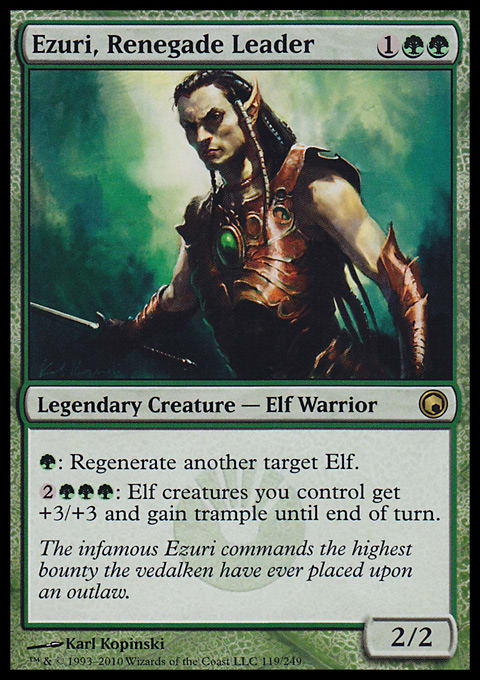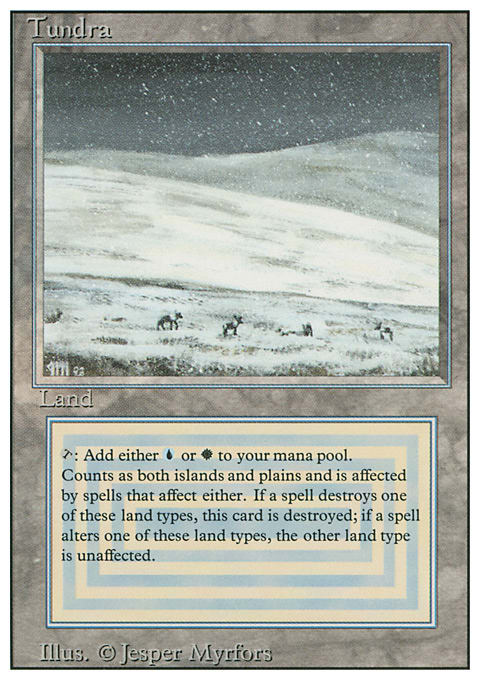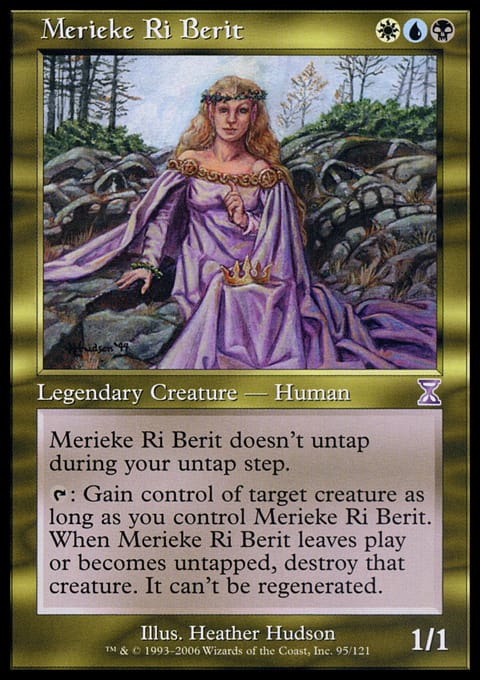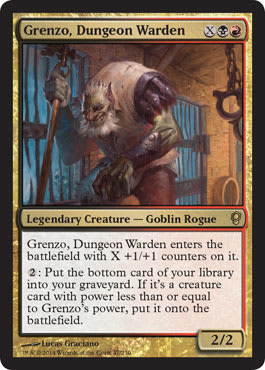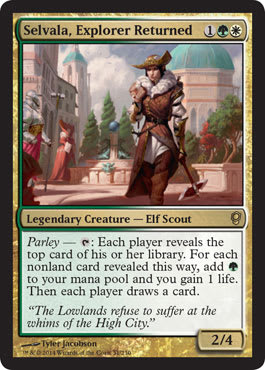Now that even the mothership covered Tiny Leaders, I won't waste time introducing the new format. Instead, let's take a look where things stand, just two or so months into this national momentum.

Anax and Cymede by Willian Murai
Online Communities
First and foremost, the discussions online are lively, growing, and increasingly competitive.
 The subreddit r/TinyLeaders, which now boasts about twenty-five hundred subscribers, started off with daily Alesha, Who Smiles at Death lists from people who hadn't played a single game, prompting redundant guesswork from the equally uninformed. That climate of conjecture persists, to a degree—signaling a virile brewing scene—but the lists are hardening into playtested consensuses. We're seeing the first tournament reports from local game stores across the country, podcasts hosting discussion, and Twitch channels streaming matchups between key decks. Until MTGSalvation anoints a dedicated forum, r/TinyLeaders is the best resource online.
The subreddit r/TinyLeaders, which now boasts about twenty-five hundred subscribers, started off with daily Alesha, Who Smiles at Death lists from people who hadn't played a single game, prompting redundant guesswork from the equally uninformed. That climate of conjecture persists, to a degree—signaling a virile brewing scene—but the lists are hardening into playtested consensuses. We're seeing the first tournament reports from local game stores across the country, podcasts hosting discussion, and Twitch channels streaming matchups between key decks. Until MTGSalvation anoints a dedicated forum, r/TinyLeaders is the best resource online.
Over on Facebook, the Tiny Leaders group is around the same size, but, as that site entails, it hosts a more casual conversation. Quick questions, decklists, and bare musings populate the group's newsfeed, as often rigorous as comedic, if a bit frivolous. I welcome its injection into my own newsfeed, as I'd way rather see banter about Magic than surprising descendants. At the moment, this community seems to be more supplemental than it is a destination.
LGS Play
I reached out to stores from which players were posting tournament results, and I learned about these nascent Tiny Leaders scenes from their organizers. Several stores report the beginnings of traction—just five or six players coming out to events—but others have much higher numbers to flex.
At Phoenix Rising Games of Salisbury, MD, reportedly the largest card store on that state's eastern shore, thirty-five players chose Tiny Leaders over Standard for the Friday Night Magic preceding the Fate Reforged prerelease.
"We decided to do a [Tiny Leaders] FNM because of the new FNM structure," says card buyer Jason Collins. "Four people showed up and wanted to play Standard, and because Standard wasn't going to fire, the Tiny Leaders players lent them decks so everyone could play in the same tournament."
Collins describes the store's meta as "Legacy-lite," with players abandoning aggro for "more midgame strategies, now that they know what the format feels like."
At the The Monstore in Montclaire, CA, employee Drew Monohan reports a scene of about twelve regulars with another twenty dipping their toes, and weekly tournaments on Sunday afternoons.
He describes the meta as "pretty casual," with "about four to eight try-hards," including himself. "[The scene] is definitely growing," he says. "I love the format, and I'm really trying to push it to Commander players."
Dave Beaubien of Fun Factory in Traverse City, MI, says he's noticed a buzz around the store, with an average of eight players showing up for the last three weeks. "I think there's going to be a lot of people into it," he says, anticipating more regular attendance when this winter stops punishing his region.
The Meta
As Collins alluded, the format is essentially singleton Legacy with mini commanders, which seems to be attracting Spikes and casuals alike. This entails some spillover of Legacy archetypes as well as a range of competitiveness. For the most part, however, decks are lean and strong.
Given the Eternal card pool and smaller-than-ever decks, mana bases are tuned with zero room for slack: Revised duals abound, and three-color lists might not run any basics (empowering Blood Moon). This polish is, of course, ubiquitous on Cockatrice, but it’s probably more relaxed in LGS metas. Still, newer players might be facing down some cash.
Staple-wise, the 3-man constraint prioritizes alternatives to classic favorites by stipulating their drawbacks from the start: Specifically, Smother is Murder for ![]()
![]() , Inquisition of Kozilek is Thoughtseize without the life-loss, and Unearth is nearly the same for Reanimate. Likewise, Eidolon of the Great Revel and Pyrostatic Pillar burn players for casting spells, and Trinisphere ruins curves. Order of Whiteclay is a thing that exists.
, Inquisition of Kozilek is Thoughtseize without the life-loss, and Unearth is nearly the same for Reanimate. Likewise, Eidolon of the Great Revel and Pyrostatic Pillar burn players for casting spells, and Trinisphere ruins curves. Order of Whiteclay is a thing that exists.
Due to Geist of Saint Traft and True-Name Nemesis, Council's Judgment arose as the Vindicate of choice for its exiling effect, single color, and, above all else, lack of targeting. It doesn’t hit lands, but that’s what Wasteland’s for.
Finally, players learned quickly that simply halving your Commander deck yields subpar results, since that format's languid openings will get you steamrolled here. The migrating legendaries therefore sport reimagined builds—most notably Animar, Soul of Elements, whose fatties disappeared. By the same token, quite a few forgotten faces gained their first shots at viability.
Currently, the decks to beat are:
- Geist of Saint Traft (Voltron or control)
- Ezuri, Renegade Leader (Elves aggro)
- Merieke Ri Berit (combo or control)
Others vying for the top include:
- Anafenza, the Foremost (midrange, seen below)
- Shu Yun, the Silent Tempest (tempo, seen below)
- Maga, Traitor to Mortals (mono-black control, seen below)
- Animar, Soul of Elements (tempo/storm or Hydras)
- Varolz, the Scar-Striped (scavenge shenanigans)
- Doran, the Siege Tower (control)
- Brimaz, King of Oreskos (midrange or tokens)
- Thalia, Guardian of Thraben (Death and Taxes)
- Kira, Great Glass-Spinner (Merfolk)
- Sygg, River Cutthroat (mill or combo)
- Grenzo, Dungeon Warden (Goblins tribal)
- Alesha, Who Smiles at Death (aggro, midrange, or Tempered Steel)
- Nin, the Pain Artist (counter-burn)
- Zo-Zu the Punisher (burn)
- Marath, Will of the Wild (Naya zoo)
- Thassa, God of the Sea (tempo or Merfolk)
- Teysa, Orzhov Scion (tokens)
- Athreos, God of Passage (attrition)
- Yasova Dragonclaw (midrange trickery)
- Tetsuo Umezawa (combo/control)
- Vendilion Clique (control)
Fringe hopefuls include:
- Jenara, Asura of War (midrange)
- Omnath, Locus of Mana (Hydra beats or Voltron ramp)
- Xira Arien (Jund control)
- Kemba, Kha Regent (Voltron)
- Anax and Cymede (heroic aggro)
- Skullbriar, the Walking Grave (Voltron/control)
- Maralen of the Mornsong (combo)
- Angus Mackenzie (Turbo Fog)
- Radha, Heir to Keld (aggro/burn)
- Selvala, Explorer Returned (Elfball)
- Glissa, the Traitor (recursion)
Geist of Saint Traft, especially in its more controlling builds, just beats face with that Angel while keeping your board clear. The word hexproof demands Edict effects in every black deck's sideboard, and both Arcane Lighthouse and Glaring Spotlight assist in other colors. Against Ezuri, Renegade Leader, playing solitaire means death on turn four to an elven muscle-wave. Taking out Ezuri himself, however, reduces the deck to an entourage of dorks. Merieke Ri Berit can come in several forms, but her win cons are usually Nephalia Drownyard with Ashiok, Nightmare Weaver or the combo of Thopter Foundry and Sword of the Meek combo. Speed and hand disruption are your friends here.
Note that Alesha, Who Smiles at Death seems to be what everyone brews first—which was also the case for me—but she just isn't putting up results. Over two weeks of Cockatrice playtesting, I arrived at a pretty polished aggro list with more than twenty-five creatures. The deck may sweep against control in game one, but it never goes big enough to topple midrange, and it falters to sideboard answers regardless. It just isn't well-positioned in a format with Stoneforge Mystic and Swords; if you try to run that package for yourself, you hinder the speed upon which the deck depends, and you may as well play a different commander (it's Brimaz, King of Oreskos).
Decklists
I could spotlight a number of the lists above, but the following three curate my favorite things happening in the format.
Anafenza, the Foremost – Midrange
This list, by Jake Bartlett of Massachusetts, out-values the opponent with good stuff on parade. Every card is excellent on its own, and the assembly equips you for a range of matchups. Piloting this looks like a blast.
Anafenza, the Foremost Midrange ? Tiny Leaders | Jake Bartlett
- Commander (0)
- Creatures (13)
- 1 Birds of Paradise
- 1 Courser of Kruphix
- 1 Dark Confidant
- 1 Deathrite Shaman
- 1 Eternal Witness
- 1 Loxodon Smiter
- 1 Mother of Runes
- 1 Qasali Pridemage
- 1 Scavenging Ooze
- 1 Stoneforge Mystic
- 1 Tarmogoyf
- 1 Voice of Resurgence
- 1 Brimaz, King of Oreskos
- Planeswalkers (1)
- 1 Liliana of the Veil
- Spells (17)
- 1 Abrupt Decay
- 1 Dismember
- 1 Path to Exile
- 1 Smother
- 1 Swords to Plowshares
- 1 Council's Judgment
- 1 Green Sun's Zenith
- 1 Hymn to Tourach
- 1 Inquisition of Kozilek
- 1 Lingering Souls
- 1 Thoughtseize
- 1 Toxic Deluge
- 1 Pernicious Deed
- 1 Sylvan Library
- 1 Bitterblossom
- 1 Sword of Feast and Famine
- 1 Sword of Fire and Ice
- Lands (18)
- 1 Forest
- 1 Plains
- 1 Swamp
- 1 Bayou
- 1 Bloodstained Mire
- 1 Command Tower
- 1 Dryad Arbor
- 1 Godless Shrine
- 1 Horizon Canopy
- 1 Marsh Flats
- 1 Overgrown Tomb
- 1 Savannah
- 1 Scrubland
- 1 Temple Garden
- 1 Verdant Catacombs
- 1 Wasteland
- 1 Windswept Heath
- 1 Wooded Foothills
- Sideboard (10)
- 1 Choke
- 1 Circle of Protection Red
- 1 Duress
- 1 Engineered Explosives
- 1 Gaea's Blessing
- 1 Krosan Grip
- 1 Nevermore
- 1 Pithing Needle
- 1 Ratchet Bomb
- 1 Rest in Peace
Shu Yun, the Silent Tempest – Tempo
As author Mike Pitfield from Toronto, Ontario says, this deck “plays all the most versatile cards while keeping [its] curve as low as possible,” slinging burn, counters, and deck manipulation while its commander swings. The list seems reactive, skill-intensive, and swift.
Shu Yun, the Silent Tempest Tempo ? Tiny Leaders | Mike Pitfield
- Commander (0)
- Creatures (9)
- 1 Delver of Secrets
- 1 Figure of Destiny
- 1 Grim Lavamancer
- 1 Mother of Runes
- 1 Snapcaster Mage
- 1 Stoneforge Mystic
- 1 True-Name Nemesis
- 1 Young Pyromancer
- 1 Vendilion Clique
- Spells (24)
- 1 Brainstorm
- 1 Counterspell
- 1 Daze
- 1 Electrolyze
- 1 Enlightened Tutor
- 1 Lightning Bolt
- 1 Lightning Helix
- 1 Mental Misstep
- 1 Miscalculation
- 1 Path to Exile
- 1 Spell Pierce
- 1 Spell Snare
- 1 Swords to Plowshares
- 1 Chain Lightning
- 1 Forked Bolt
- 1 Gitaxian Probe
- 1 Mizzium Mortars
- 1 Ponder
- 1 Preordain
- 1 Serum Visions
- 1 Engineered Explosives
- 1 Sensei's Divining Top
- 1 Sword of Feast and Famine
- 1 Sword of War and Peace
- Lands (16)
- 1 Island
- 1 Mountain
- 1 Plains
- 1 Arid Mesa
- 1 Flooded Strand
- 1 Hallowed Fountain
- 1 Misty Rainforest
- 1 Moorland Haunt
- 1 Polluted Delta
- 1 Sacred Foundry
- 1 Scalding Tarn
- 1 Steam Vents
- 1 Tundra
- 1 Volcanic Island
- 1 Wasteland
- 1 Wooded Foothills
- Sideboard (10)
- 1 Bonfire of the Damned
- 1 Circle of Protection Red
- 1 Dispel
- 1 Eidolon of Rhetoric
- 1 Mystical Tutor
- 1 Pyroblast
- 1 Pyroclasm
- 1 Sulfuric Vortex
- 1 Vedalken Shackles
- 1 Wear // Tear
Maga, Traitor to Mortals – Mono-Black Control
Lancaster, PA brewer Evan Cagwin brings mono-black control, making big mana on a Tiny scale. This deck shreds its opponent’s hand, eats what creatures resolve, and drains off the dome with its commander. If that isn’t enough, Thespian's Stage and Vampire Hexmage activate Dark Depths.
Maga, Traitor to Mortals Mono-Black Control ? Tiny Leaders | Evan Cagwin
- Commander (0)
- Creatures (6)
- 1 Dark Confidant
- 1 Herald of Torment
- 1 Hypnotic Specter
- 1 Liliana's Specter
- 1 Pack Rat
- 1 Vampire Hexmage
- Planeswalkers (1)
- 1 Liliana of the Veil
- Spells (23)
- 1 Dark Ritual
- 1 Geth's Verdict
- 1 Smother
- 1 Black Sun's Zenith
- 1 Consume Spirit
- 1 Drown in Sorrow
- 1 Exsanguinate
- 1 Hymn to Tourach
- 1 Innocent Blood
- 1 Inquisition of Kozilek
- 1 Mind Shatter
- 1 Night's Whisper
- 1 Sign in Blood
- 1 Thoughtseize
- 1 Toxic Deluge
- 1 Dark Tutelage
- 1 Liliana's Caress
- 1 Phyrexian Arena
- 1 Bitterblossom
- 1 Expedition Map
- 1 Mind Stone
- 1 Sensei's Divining Top
- 1 Worn Powerstone
- Lands (19)
- 5 Swamp
- 1 Ancient Tomb
- 1 Cabal Coffers
- 1 Cloudpost
- 1 Deserted Temple
- 1 Glimmerpost
- 1 Lake of the Dead
- 1 Thespian's Stage
- 1 Urza's Mine
- 1 Urza's Power Plant
- 1 Urza's Tower
- 1 Vesuva
- 1 Nykthos, Shrine to Nyx
- 1 Urborg, Tomb of Yawgmoth
- 1 Dark Depths
- Sideboard (10)
- 1 Profane Command
- 1 Lifebane Zombie
- 1 Phyrexian Revoker
- 1 Pithing Needle
- 1 Bojuka Bog
- 1 Planar Void
- 1 Sadistic Sacrament
- 1 Diabolic Edict
- 1 Wasteland
- 1 Ashes to Ashes
I hope this article paints a clear landscape and serves as a map for brewers. Thanks for reading, and as always, follow me on Twitter for MTG-unrelated comedy.
Sources
Decklists are from:
Quotes were obtained via phone interviews.














